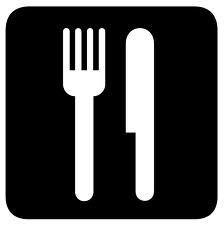Restaurant advertising has typically worked through radio, television, and print, billboards, coupons, menus in the window, and sandwich boards. Today, SMS advertising can be added to these ways of bringing in diners. Read on to learn more.
Restaurant Advertising
Traditional restaurant advertising has developed as media has developed. For example, as some chefs have become celebrity figures, other chefs have taken advantage of increased public awareness of the art that goes on in the kitchen to get out of the kitchen and make public appearances in their communities or on local television to promote their restaurants. New media has also brought new possibilities to restaurant advertising. For example, iPhone advertising has shown a user searching for and locating a restaurant with a particular type of cuisine. One of the newest possibilities that restaurants are starting to take advantage of in their marketing is SMS advertising campaigns.
What Is Restaurant SMS Advertising?
The abbreviation SMS stands for “Short Message Service.” The service is a way of sending text to cell phones, either from another cell phone, or from a computer or handheld device. In English, the message size is generally 160 characters, which can include Latin alphabet letters, numbers, and symbols. Restaurant SMS advertising is any restaurant marketing campaign that is spread using the SMS technology: that is, advertising sent to customers’ and potential customers’ cell phones.
SMS Advertising and the Law
A mobile phone version of the CAN-SPAM Act of 2003 (Controlling the Assault of Non-Solicited Pornography And Marketing) was introduced to Congress in 2009, but did not get out of committee. Nevertheless, mobile phone spam is already illegal according to the Federal Communications Commission (FCC). To avoid sending spam or being accused of sending spam, one should only send text message advertising that meets these criteria:
• Customers have opted-in to receive the advertising.
• The text messages are not sent using an automatic telephone dialing system.
• The headers and subject lines are clear and accurate
• The fact that the message is advertising is clearly represented.
• Opt-out options are provided.
Ideas for Using SMS Advertising for Your Restaurant
Restaurant SMS advertising can be used to announce promotions, specials, and coupons. Here are some of the approaches you can take to advertising your restaurant with SMS.
• Create an opt-in that involves customers texting a keyword to you. You can use different keywords to distinguish different groups of customers. For example, you may have a different lunchtime clientele than dinner clientele, and by using a different keyword, you can have them opt-in to material specifically suited to their interests.
• Provide a valuable item, such as a coupon, as a sign-up incentive.
• For regular customers, send updates at regular intervals.
• Think strategically about timing. For example, announce weekend specials each Thursday. Send daily lunch specials in the late morning, but Happy Hour specials in the late afternoon.
• Create a loyalty program that helps customers track their progress to the next level with a weekly or biweekly update.
• Team up with other restaurants to create a campaign for your city’s Restaurant Week. This approach can spread the word about specials without overwhelming customers with messages.
• Integrate your use SMS advertising with your other advertising effort: use your menu, website, print, and billboard advertising to let people know that you have an SMS program that will provide them with coupons (or whatever your promotion scheme is).
• If your business is in a vacation spot, work with your local chamber of commerce and travel agents to offer visitors an option to receive notification of specials while they’re in town, and then plot some tempting treats for tourists.
Sources
The Federal Trade Commission’s CAN-SPAM Act website for businesses: http://www.ftc.gov/bcp/edu/pubs/business/ecommerce/bus61.shtm
